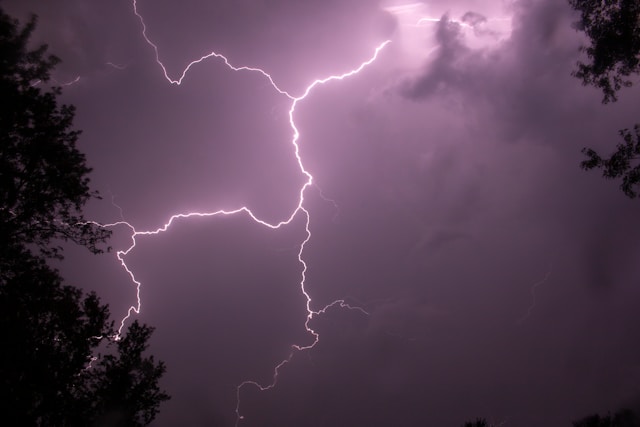Storm Damage Preparedness and Recovery for Homeowners
Storms can be unpredictable, both in their arrival and the damage they cause. For homeowners, that unpredictability often comes with a mix of worry and responsibility. You can’t control the weather, but you can control how ready you are when severe weather strikes—and how you respond afterward. With a little planning and some smart follow-up steps, you can protect your home, minimize losses, and recover faster when the skies clear.

Understanding the Risks
Every home faces its own unique weather threats. In coastal states, hurricanes and tropical storms may be the biggest worry. In the Midwest, tornadoes, hail, and severe thunderstorms are common. Northern regions often contend with blizzards and ice storms.
Taking the time to understand your area’s storm patterns will help you prepare more effectively. Local weather services, historical data, and seasonal forecasts can all give you a clearer picture of what to expect and when.
Knowing your risks isn’t just about predicting the kind of storm—it’s also about understanding how your specific home might be vulnerable. A house with an older roof may not handle high winds well, while homes in low-lying areas might be at greater risk of flooding. Awareness is the first step in taking the right precautions.
Preparing Your Home Before the Storm
Some of the best protection comes from the work you do long before a storm is in the forecast. Regular maintenance and small upgrades can prevent small issues from becoming major damage.
For example, inspecting your roof each season helps you catch missing shingles or loose flashing early. Clearing gutters ensures water can flow away from your home instead of pooling near the foundation. In wind-prone areas, trimming back overhanging branches keeps them from crashing down during a storm.
If you own outdoor furniture, grills, or yard décor, have a plan for securing or storing them when high winds are predicted. For those in hurricane zones, storm shutters or impact-resistant glass can offer valuable peace of mind. And if flooding is a concern, sump pumps and sandbags can help keep water out.
Building Your Emergency Kit
While home protection is important, personal safety comes first. An emergency kit ensures you and your household can get by if you lose power or have to shelter in place for a few days. The essentials typically include:
- Bottled water—one gallon per person per day for at least three days
- Non-perishable food and a manual can opener
- Flashlights and extra batteries
- A first-aid kit and necessary medications
- Blankets and weather-appropriate clothing
- A battery-powered radio to stay updated on conditions
Keep your kit in a spot that’s easy to reach, and check it periodically to replace expired food or drained batteries. If you have pets, don’t forget to include their food, medications, and comfort items.
Staying Safe While the Storm Is Underway
When the weather starts to turn, your main priority is protecting yourself and your loved ones. If you’re at home, stay inside and away from windows. An interior room without glass—such as a bathroom, closet, or basement—is the safest place to shelter.
Power outages can happen suddenly, so unplug sensitive electronics and keep flashlights within reach. If authorities issue an evacuation order, follow it quickly; conditions can deteriorate faster than you might expect. For more detailed safety steps tailored to different storm types, the FEMA Ready Campaign is a reliable resource.
Assessing Damage After the Storm
Once the skies clear, it’s tempting to step outside and see what happened. Take a moment to be cautious—downed power lines, broken glass, and unstable structures can pose serious risks. Wear sturdy shoes and gloves as you check your property.
Start by looking at the roof for missing shingles or punctures. Check windows and siding for cracks, and see if water is pooling near the foundation. Inside, look for damp spots on ceilings and walls, as these can signal leaks. Document everything with photos and videos before making any repairs; this will help when filing insurance claims.
Moving into Recovery Mode
The hours and days after a storm are often overwhelming, but approaching recovery step by step makes it more manageable. Contact your insurance company as soon as possible and provide them with your documentation. Temporary repairs, such as covering a damaged roof with a tarp or boarding up broken windows, can help prevent further harm while you wait for permanent fixes.
Water that enters a home can seep into walls and flooring, creating an environment where mold develops quickly. Electrical systems may also be compromised. This is where professional help becomes essential. Restoration specialists like Alladin Restoration have the equipment and expertise to address hidden issues and return your home to a safe, livable condition.
Thinking Beyond the Immediate Repairs
Once your home is back in shape, it’s worth considering upgrades that can make it more resilient against future storms. Reinforcing garage doors, installing a backup generator, and using wind-resistant roofing materials are all investments that can pay off in reduced damage down the road.
Flood-prone homes might benefit from raising electrical outlets or installing flood vents. Even small landscaping changes—like grading your yard to direct water away from the foundation—can reduce the risk of water damage.
A Long-Term Mindset
Storm preparedness isn’t just about reacting to a forecast; it’s about building habits that protect your home year-round. Regular inspections, seasonal maintenance, and an updated emergency plan help ensure that when the next storm arrives, you’re ready.
The reality is that storms will happen, and sometimes they will cause damage despite your best efforts. But with preparation, quick action, and the right support, you can recover more easily and keep your home—and the people in it—safe.
